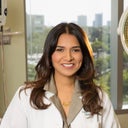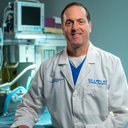Posted underTummy Tuck q&a
How do you know if you need muscle repair when you are getting a tummy tuck?
I had a c-section and have a pouch that I am thinking about getting rid of, but how do you know if you need muscle repair?
Answers (9)
From board-certified doctors and trusted medical professionals
Dr. Robert M. Tornambe, MD

Dr. Robert M. Tornambe, MD
Board Certified Plastic Surgeon
Answer
Dr. Howard Webster, MBBS (Hons), FRACS

Dr. Howard Webster, MBBS (Hons), FRACS
Specialist Plastic Surgeon
Answer
Dr. Farah Naz Khan, MD

Dr. Farah Naz Khan, MD
Board Certified Plastic Surgeon
Answer
Dr. Erik Miles, MD, FACS

Dr. Erik Miles, MD, FACS
Board Certified Plastic Surgeon
Answer
Dr. Camille Cash, MD
Dr. Camille Cash, MD
Board Certified Plastic Surgeon
Answer
Dr. Deborah Ekstrom, MD
Dr. Deborah Ekstrom, MD
Board Certified Plastic Surgeon
Answer
Dr. William C. Rigano, MD (retired)
Dr. William C. Rigano, MD (retired)
Board Certified Plastic Surgeon
Answer
Dr. M. Dean Vistnes, MD - Account Suspended
Dr. M. Dean Vistnes, MD - Account Suspended
Board Certified Plastic Surgeon
Answer
More Tummy Tuck Questions
See all Tummy Tuck Q&AWE SEND PRETTY
EMAILS
What’s trending? Who’s turning heads? Which TikTok myths need busting? We’ve got you. No fluff, no gatekeeping—just real talk. Get our free, unfiltered newsletter.